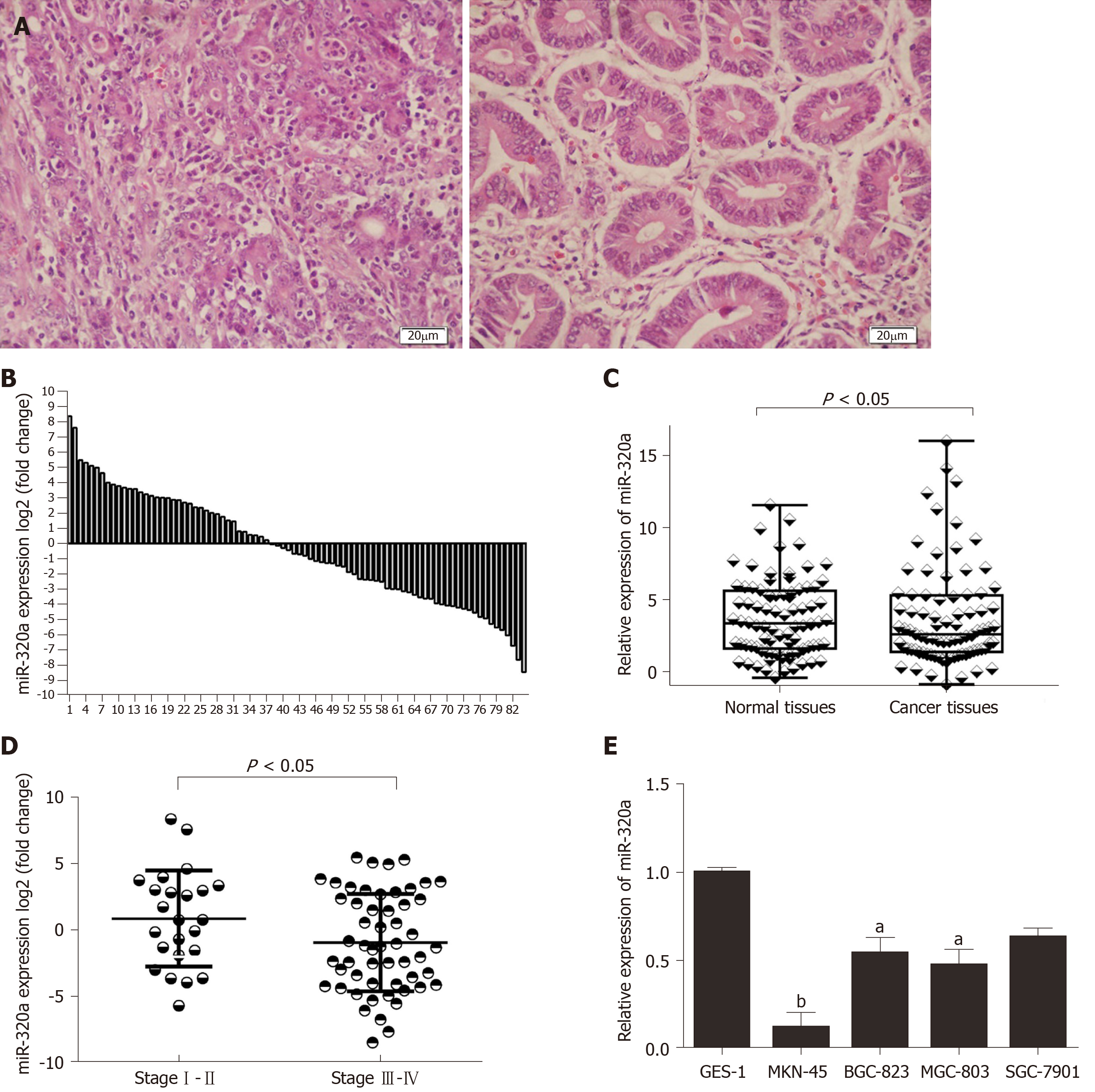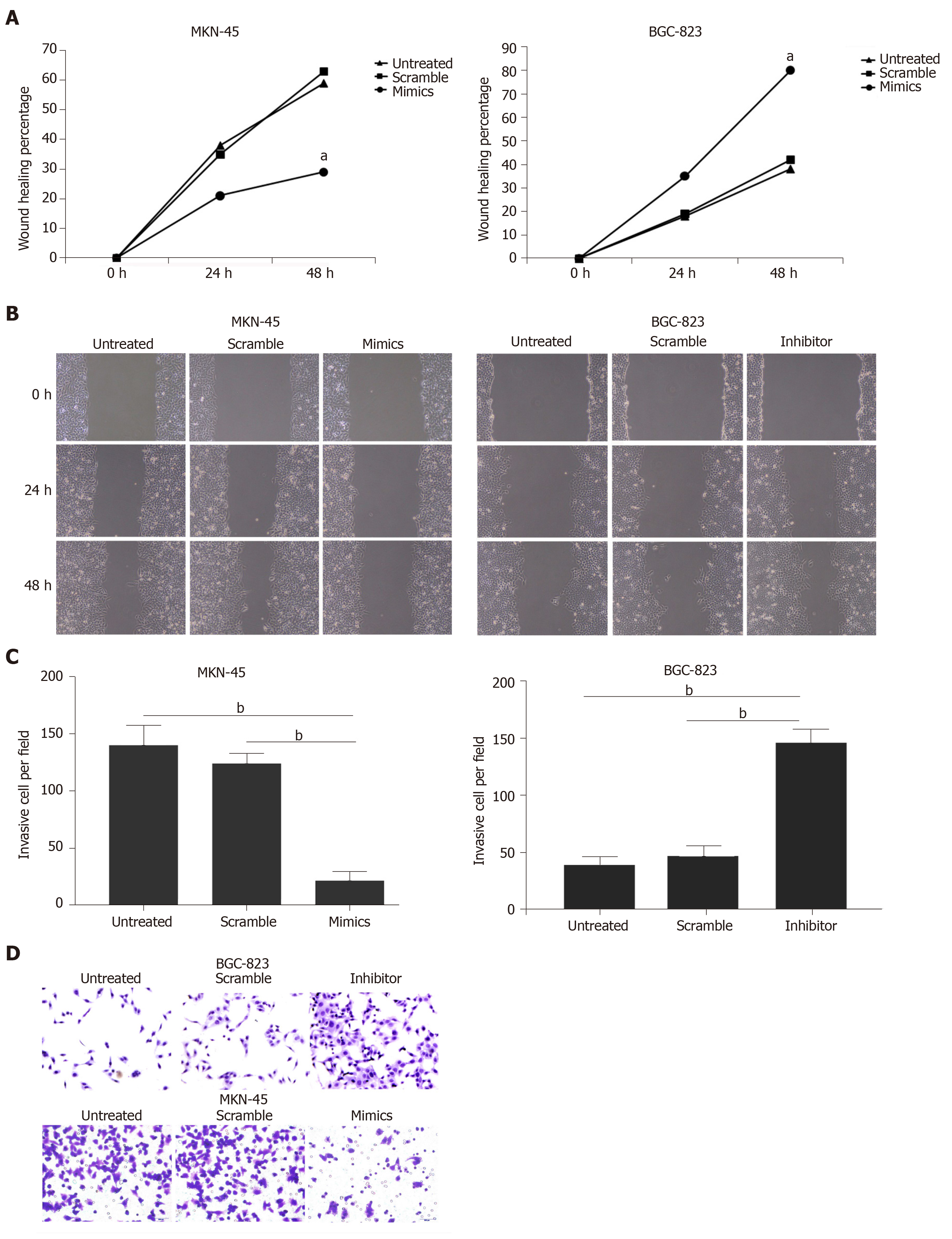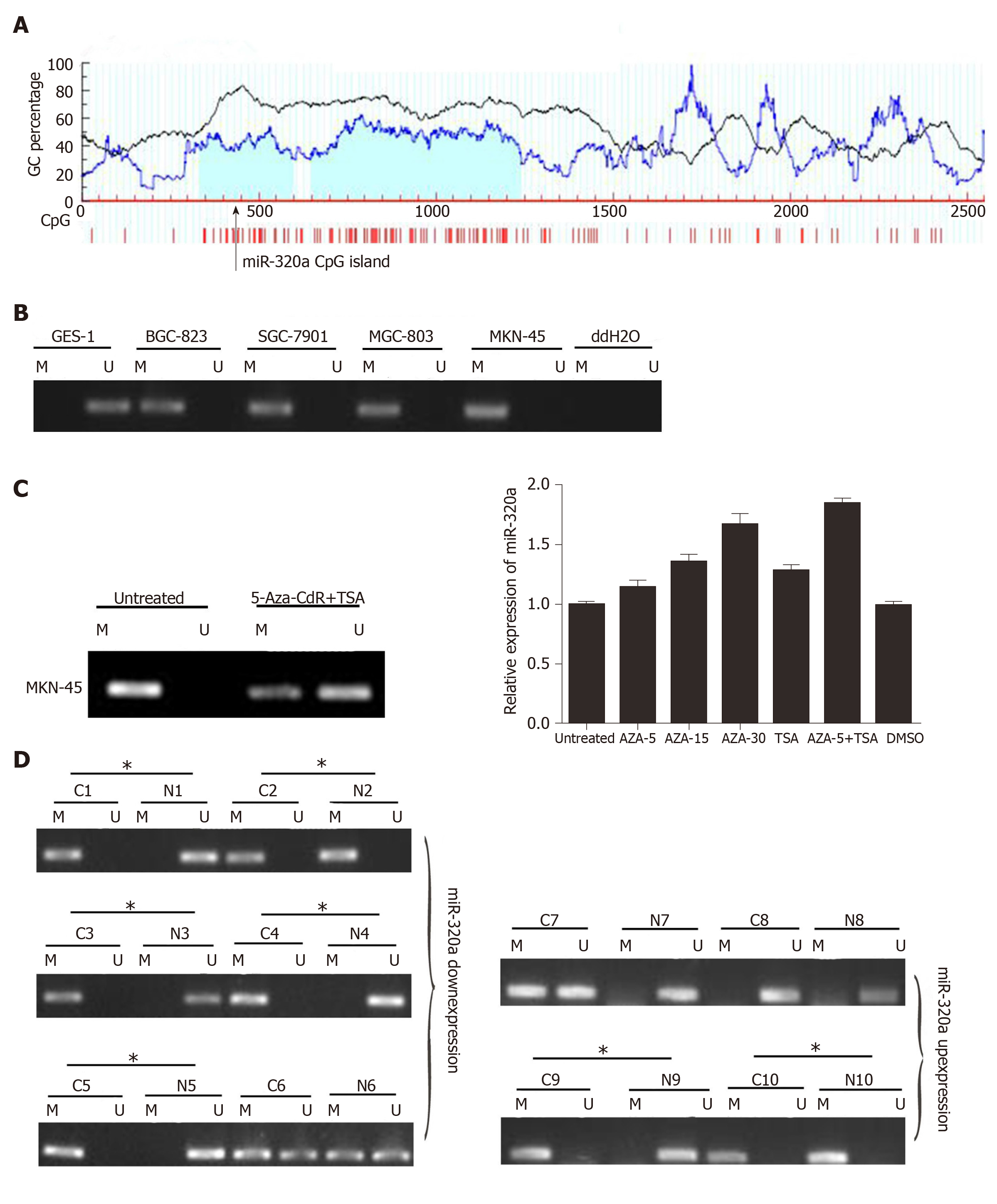Copyright
©The Author(s) 2019.
World J Gastrointest Oncol. Oct 15, 2019; 11(10): 842-856
Published online Oct 15, 2019. doi: 10.4251/wjgo.v11.i10.842
Published online Oct 15, 2019. doi: 10.4251/wjgo.v11.i10.842
Figure 1 Expression of miR-320a in gastric cancer samples and cell lines, and miR-320a downregulation is correlated with tumor TNM stage.
A: Representative tissue slices from gastric cancer (GC) patients were stained using HE; scale bars 20 μm; B: miR-320a expression in 84 pairs of GC tissues and adjacent nontumor tissues is presented as log2 of fold change. Expression of miR-320a in these 84 pairs of samples was determined by quantitative PCR; C: Comparison of expression of miR-320a in GC tissues and matched normal tissues (P < 0.05); D: mir-320a expression in stage I/II (n = 23) and stage III/IV (n = 54) and the results are shown as log2 of fold change in GC tissues relative to normal tissues (P < 0.05); E: Expression of miR-320a in GES-1 and GC cell lines (MKN-45, BGC-823, MGC-803 and SGC-7901). aP < 0.05, bP < 0.01. The reference genes were set using U6 snRNA. All the experiments were conducted in triplicate. Data were analyzed by ANOVA or t test. The data are reported as means ± SD.
Figure 2 Overexpression of miR-320a inhibited gastric cancer cell viability and promoted apoptosis.
A: Expression of miR-320a in gastric cancer (GC) cells was determined by quantitative PCR after transfection with miR-320a mimics (50 nmol/L), scramble mimics, miR-320a inhibitor (100 nmol/L), scramble inhibitor or no transfection; B: CCK8 assay was performed to determine cell viability after transfection at 0, 12, 24 and 72 h; C: Early apoptosis rate in the three groups is shown in the histogram; D: Flow cytometry was used to determine apoptosis after transfection for 48 h. The data are reported as means ± SD. aP < 0.05, bP < 0.01.
Figure 3 Overexpression of miR-320a suppressed gastric cancer cell migration and invasion.
A, B: Wound scratch assay was used to assess migration of MKN-45 cells. Wound healing percentage was measured at 0, 24 and 48 h after transfection with miR-320a mimics (50 nmol/L), scramble mimics, miR-320a inhibitor (100 nmol/L), scramble inhibitor or no transfection; C, D: Transwell invasion assay was carried out to determine gastric cancer cell invasion after transfection with miR-320a mimics/inhibitor, scramble mimics/inhibitor or no transfection for 48 h. Cell invasion was assessed at 24 h. aP < 0.05, bP < 0.01.
Figure 4 Expression of miR-320a and methylation status of its promoter CpG islands in gastric cancer cell lines and tissue samples.
A: Schematic of the location of miR-320a promoter CpG islands obtained from the human genome database and MethPrimer 2.0 (online); B: Methylation level of miR-320a in GES-1 and four gastric cancer (GC) cell lines; C: miR-320a expression and its promoter CpG island methylation level after 5-Aza-CdR and/or TSA treatment of MKN-45 cells; D: Representative MSP results of miR-320a promoter CPG islands in GC samples (cancer tissues and matched adjacent normal tissues). Cases with hypermethylation are marked. M: Methylated; U: Unmethylated; C: Cancer tissues; N: Normal tissues; *: Hypermethylation.
Figure 5 PBX3 was a direct target of miR-320a.
A: Banding region between miR-320a and PBX3 was predicted by microRNA.org; B: Relative luciferase activities of PBX3 in wild type and mutant; C: PBX3 protein level in gastric cancer (GC) cells after transfection with miR-320a mimics, scramble mimics, miR-320a inhibitor, scramble inhibitor or no transfection for 48 h; D: Protein level of PBX3 in GC tissues and matched adjacent normal tissues. Reference protein was set using GAPDH. C: Cancer tissues; N: Normal tissues; aP < 0.05; bP < 0.01.
- Citation: Li YS, Zou Y, Dai DQ. MicroRNA-320a suppresses tumor progression by targeting PBX3 in gastric cancer and is downregulated by DNA methylation. World J Gastrointest Oncol 2019; 11(10): 842-856
- URL: https://www.wjgnet.com/1948-5204/full/v11/i10/842.htm
- DOI: https://dx.doi.org/10.4251/wjgo.v11.i10.842

















